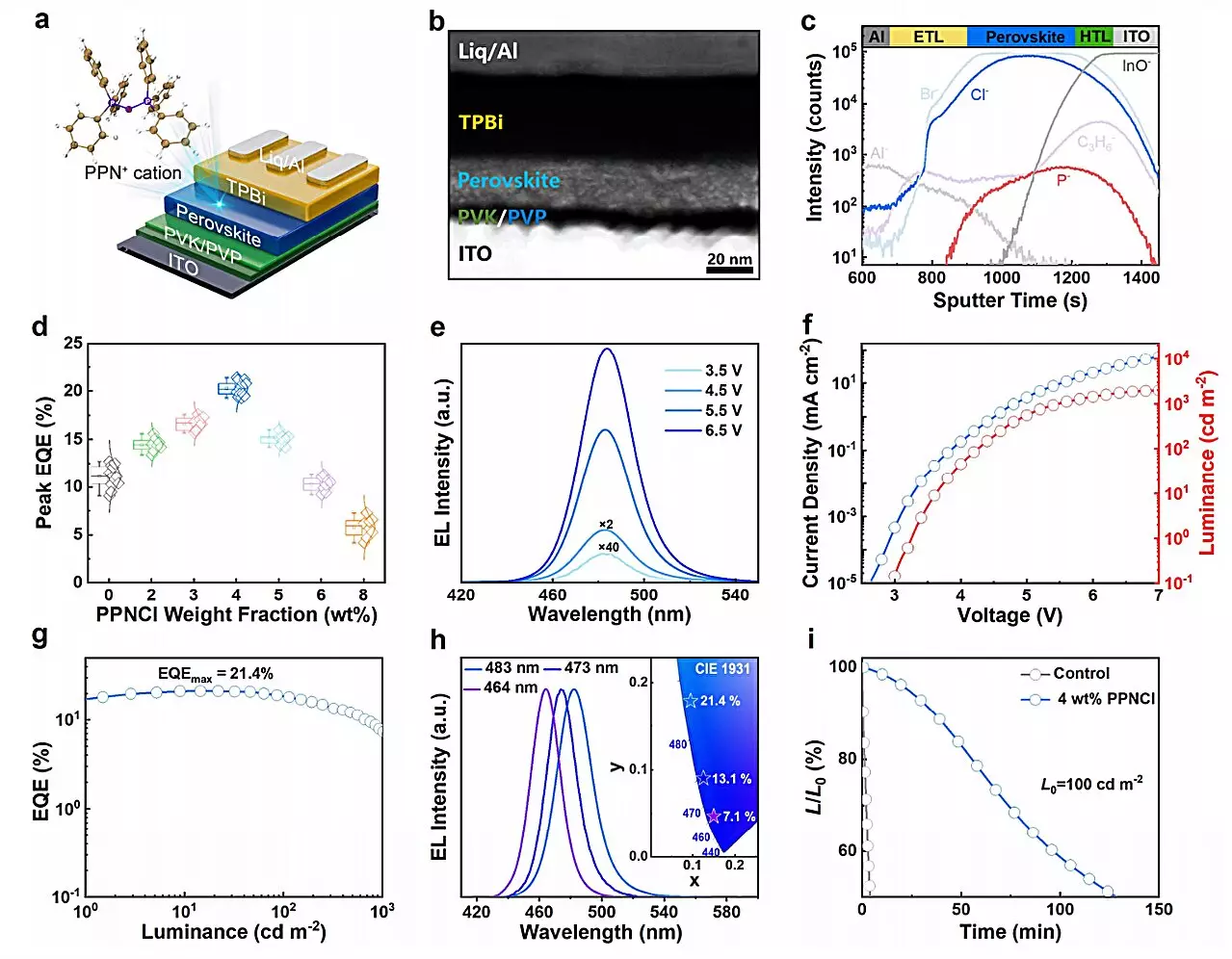The research conducted by Prof. Cui Linsong’s team from the University of Science and Technology of China in collaboration with Prof. Samuel D. Stranks’ team from the University of Cambridge has brought about a groundbreaking strategy to enhance the performance of blue light-emitting diodes (LEDs) using perovskite materials. This study, published in Nature Photonics, opens new possibilities for the advancement of next-generation lighting and display technologies.
Despite the significant progress made in green, red, and near-infrared perovskite LEDs, the development of blue perovskite LEDs has faced obstacles, creating a bottleneck in the field. This challenge has prompted the research team to devise a novel approach to address the shortcomings and unlock the potential of blue perovskite LEDs.
In their study, the research team introduced a multifunctional ionic additive known as Bis(triphenylphosphine)iminium chloride (PPNCl) to the composition of perovskite materials. This additive plays a crucial role in controlling the composition and distribution of perovskite phases, thereby improving the efficiency and stability of blue perovskite LEDs. Through interactions with perovskite components via hydrogen bonding, PPNCl influences the crystallization process, promoting the transition to high-dimensional phases with enhanced luminescence efficiency.
The incorporation of PPNCl in the perovskite composition has shown significant improvements in the performance of blue perovskite LEDs. Transient absorption spectroscopy studies have revealed that PPNCl facilitates energy transfer processes, suppresses non-radiative recombination, and inhibits energy loss in low-dimensional phases. Moreover, PPNCl molecules coordinate with perovskite components, passivating defects in perovskite films, and preventing halide ion migration, leading to a remarkable enhancement in luminescence efficiency and spectral stability.
As a result of the innovative approach introduced by the research team, high-efficiency and stable blue perovskite LEDs have been realized. These devices exhibit a peak external quantum efficiency (EQE) of 21.4% with an emission peak at 483 nm, marking a significant milestone in blue perovskite LED technology. Additionally, the stability of the devices has been greatly improved, showcasing a 30-fold increase in longevity.
The success of this study not only represents a major advancement in blue perovskite LED technology but also sets the stage for further developments in the field. The effective control exerted by PPNCl over perovskite phase distribution, defect states, and ion migration opens up new possibilities for the enhancement of LED performance. This innovative achievement signals a promising future for the evolution of perovskite LED technology.


Leave a Reply